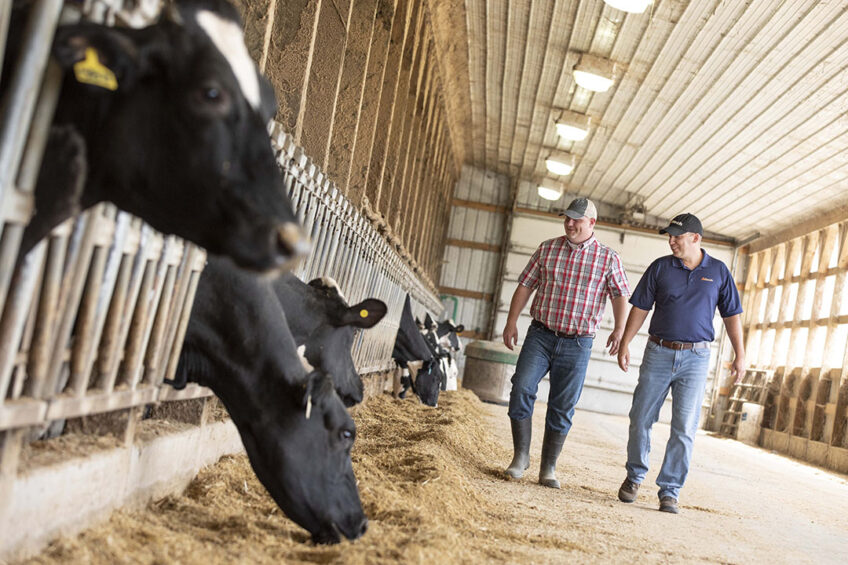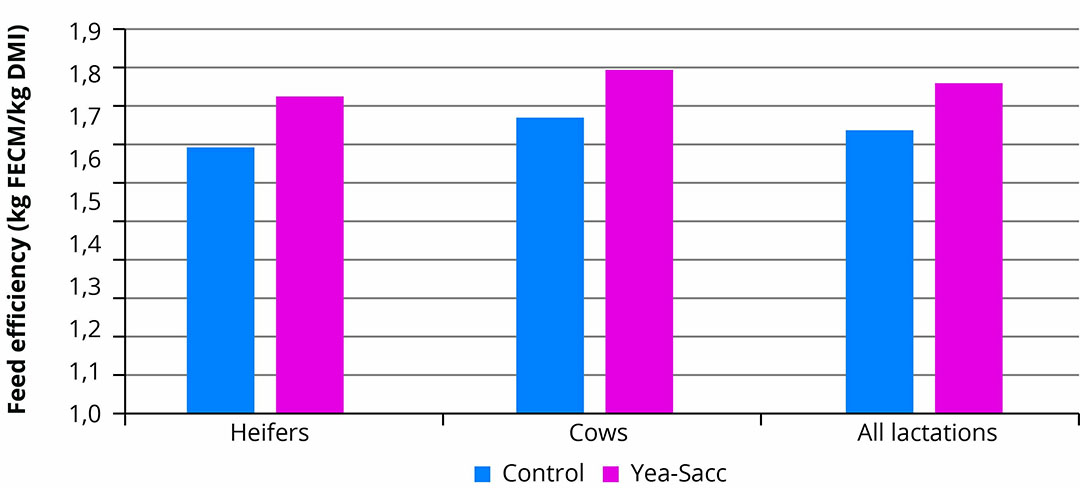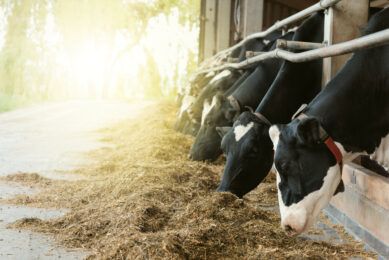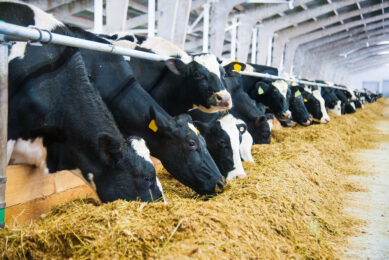Optimising inputs and mitigating feed waste

Feed is typically the highest variable cost in producing a litre of milk. This article will examine best practices in feed utilisation, storage and managing supply challenges to support dairy farm profitability.
The current geopolitical crisis has fuelled rising commodity prices, underpinned by concern around availability. Dairy producers right across the world are refocusing on margin protection and securing necessary inputs to optimise production. Lowering feed costs needs to be balanced with meeting cow needs and not compromising herd performance. In light of the current volatility, dairy producers need to ensure that feed efficiency monitoring is included as a key parameter in their management strategy.
Today, financial efficiency really counts. That means that as concentrate (i.e. corn and soy) prices increase, we should make the most of cheaper high-fibre feeds, especially home-grown forages. These attempts at better feed efficiency should be integrated into a complete feeding strategy.
Alltech studies have highlighted that up to 45% of grown and purchased feed inputs are either lost or underutilised across the feed process from the field, through storage, at feed-out and inside the animal. Recognising where waste is occurring at all points along the feed process enables producers to prioritise actions to mitigate waste at every opportunity, leading to small savings that add up.
Efficient use of feeds should always be the goal, and this can be achieved by looking at forage quality, rumen health and nutritional applications.
Forage quality
Plan to make the highest quality forage possible, since it is a significant component of the slowly digestible part of the diet of lactating cows. Forage is the most variable feed ingredient in terms of digestibility and nutrient composition, and it comprises a greater proportion of the rations than any other feedstuff. High-quality forage is more digestible, so you will be able to feed more of it to cows.
Rumen health and productivity will be improved with the use of high-quality forages and, as such, forages can influence feed efficiency through the maintenance of a desirable rumen environment. Acidosis (low rumen pH) can negatively affect feed efficiency by decreasing fibre digestibility through changes in the rumen microbial profiles. Adequate physically effective fibre (forage particle size) in the rations will help maintain the proper rumen environment by stimulating chewing and rumination, increasing saliva secretion and improving the buffering capacity of the rumen. Over-processed forages will not provide the cow with sufficient long particles and, as a result, will not stimulate rumination. Proper forage particle length is also needed to maintain the rumen environment and proper rumen motility.
Rumen health
One of the most important elements in increasing feed efficiency is to use the rumen of the dairy cow to its full potential. Supporting the activity and growth of the rumen microflora enables dietary nutrients to be extracted from the diet as efficiently as possible. While there is an even greater focus today on margin protection, producers need to ensure that ration formulation does not compromise the rumen, as suboptimal rumen function will lead to wasted feed and a lower milk response.
For the rumen to function properly, the rumen conditions must be optimal, with a pH greater than 6. Feed additives, such as live yeast, are frequently included in rations to help stabilise fluctuations in rumen pH. Particle size, along with other aspects of feed delivery and animal housing – such as ration mixing, feeding times and social interactions between animals – can impact feeding and rumination behaviour and rumen function. Poor fibre digestion due to rumen upset or an imbalanced ration can lead to reduced feed intake and increased amounts of undigested fibre in the faeces. If the cow eats less feed, and if that feed is less digestible, her energy supply will decrease, subsequently affecting her ability to produce milk. Reduced milk fat and laminitis are two of the most common symptoms of impaired rumen function and can be linked to low rumen pH.
Feed conversion efficiency (FCE) is defined as the amount of milk (kg) produced per kg feed dry matter intake, where the value of the milk has been corrected for differences in constituent composition.
Nutritional applications
The main driver of rumen function is the ration fed to the cow. Along with the forages, grain and protein sources included in the ration, other small inclusion ingredients can significantly impact rumen function. There is evidence that feeding live yeast can increase feed efficiency in lactating dairy cows, especially when cows are heat-stressed. These additives can generally improve digestive efficiency and nutrient utilisation, resulting in more milk from the same feed quantity or, conversely, less feed needed to produce the same milk.
Dietary inclusion of the live yeast Yea-Sacc (Alltech Inc.) can rapidly promote an anaerobic environment, helping desirable, fibre-digesting microbes to proliferate and efficiently colonise feed particles, resulting in improved fibre digestion. Yea-Sacc also stimulates lactate-utilising bacteria, which helps to reduce the acid load in the rumen and avoid significant drops in rumen pH, creating an optimal rumen environment. Cellulolytic bacteria then thrive and generate more energy for the cow. This creates more efficient and complete digestion of the ration, particularly the fibre portion, leading to improved feed efficiency (Figure 1).
Figure 1 – Effect of dietary inclusion of live yeast (Yea-Sacc) on feed efficiency (kg FECM/kg DMI) in Holstein dairy cows.

(adapted from Steingass et al., 2007)
Feed additives should be selected for their ability to meet the needs of a particular ration and for their return on investment, usually in the form of improved milk production or reduced feed costs. Yea-Sacc is a proprietary strain of the live yeast Saccharomyces cerevisiae, with specific rumen activity, and its benefits are supported by more than 230 research studies globally.
Current challenges are causing dairy producers to re-examine feed management strategies and find ways to save costs. To sustain profitable production, producers must focus on maximising feed efficiency and ensuring that rumen function is not compromised. The rumen is responsible for a large portion of the cow’s energy and protein supply, and good rumen function is critical to milk production and feed efficiency. Producers can minimise feed-related losses by using good quality forage, supporting rumen health and following a tailored ration formulation, thereby keeping their operations and their animals running more efficiently and resulting in potential cost savings.
References available on request.
Join 13,000+ subscribers
Subscribe to our newsletter to stay updated about all the need-to-know content in the dairy sector, two times a week.










